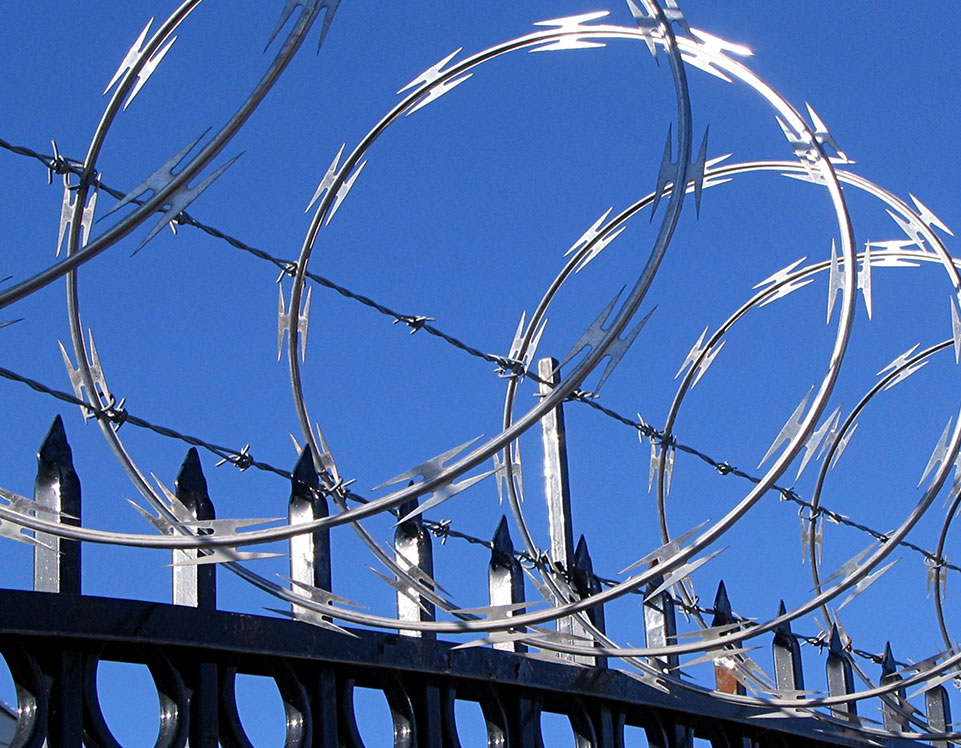The Ultimate Overview to Fiber Optic Safety Equipments for Your Organization
In an era where security worries are critical for businesses, recognizing the ins and outs of fiber optic technology can be transformative. This guide details how integrating fiber optic safety and security systems not just boosts information defense but also uses benefits like resistance to interference and real-time tracking capabilities.
Recognizing Fiber Optic Technology

The core of a fiber optic cable consists of a slim glass or plastic facility, surrounded by a cladding layer that shows light back right into the core. Single-mode fibers are designed for long-distance transmission, while multi-mode fibers are appropriate for much shorter ranges, frequently utilized within structures.
Fiber optics are not only quicker yet additionally much more safe than typical wiring. Their intrinsic resistance to electro-magnetic disturbance and the difficulty of taking advantage of the signal without discovery make them a recommended choice for services focusing on information honesty and security. As organizations increasingly depend on safe and effective interaction systems, recognizing fiber optic modern technology comes to be essential for informed decision-making.
Key Benefits of Fiber Optic Safety And Security
When thinking about safety and security choices for a service, the advantages of fiber optic systems are especially compelling. Fiber optic modern technology supplies phenomenal information transmission speeds and bandwidth capacity, making it excellent for taking care of high-resolution video clip feeds from monitoring cameras. This capacity makes certain that safety workers receive real-time information, improving general response times to possible safety risks.
In addition, fiber optic wires are naturally resistant to electromagnetic disturbance, which can endanger the stability of traditional copper-based systems. This resistance makes certain that the information transmitted continues to be safe and uninterrupted, giving a much more dependable security framework. Additionally, optical fiber are less at risk to physical damage, as they are made from glass as opposed to metal, lowering maintenance prices and downtime.
Fiber optic systems offer improved cybersecurity functions, consisting of security capacities that shield sensitive data from unauthorized access. Collectively, these benefits make fiber optic safety systems a durable selection for organizations looking for to boost their security measures.
Installation Process and Considerations
Considering the complexities involved, the installation process of fiber optic safety and security systems needs cautious planning and execution. The initial step involves a comprehensive website analysis to recognize ideal places for cabling and devices. This assessment should consider ecological variables, existing framework, and prospective vulnerabilities.

In addition, the installment needs to follow regional building codes and sector criteria. This may include collaborating with different stakeholders such as building supervisors, IT groups, and safety personnel to make certain seamless assimilation with existing systems.
Post-installation, extensive testing is required to verify system efficiency and determine any kind of issues that might arise. By focusing on these factors to consider throughout the installment process, businesses can make certain a robust and effective fiber optic protection system that satisfies their details safety needs.
Most Recent Advancements in Fiber Optic Security
Current advancements in fiber optic modern technology have dramatically improved the capacities of safety and security systems for organizations. One of one of the most noteworthy technologies is the integration of fiber optic sensing units that can spot resonances and breaches along the boundary of a center. These sensors offer real-time surveillance, enabling fast feedback to prospective violations.
In addition, the development of dispersed fiber optic picking up technology enables the continual monitoring of big locations with a solitary fiber cable. This technique not just lowers installation costs however additionally boosts the reliability of keeping an eye on systems by removing the need for multiple, different sensors.
Additionally, improvements in multiplexing strategies have actually enabled companies to transfer huge quantities of information over fiber optic networks, boosting the capacities of video clip security systems. High-def video clip feeds can currently be sent out over fars away without loss of top quality, ensuring that security personnel have access to clear and actionable information.
Lastly, using expert system (AI) in conjunction with fiber optic systems is transforming risk detection. AI algorithms can analyze data from fiber optic networks to identify unusual patterns or behaviors, enabling aggressive protection actions. These technologies jointly stand for a considerable leap forward in fiber optic security technology.
Choosing the Right System for Your Business
Picking the ideal fiber optic protection system for your service is important for guaranteeing optimal defense and satisfaction. To make an informed choice, analyze your certain safety and security needs, taking into consideration elements such as the size of your properties, the nature of your operations, and potential susceptabilities.
Begin by assessing the degree of safety required; for example, high-risk settings may demand sophisticated systems with integrated security and intrusion discovery abilities. Next off, think about scalability; as your business expands, your security system must can increasing to fit increased demands without substantial overhauls.
Furthermore, explore the reliability and performance of different systems. Try to find providers with recognized credibilities click this site and client endorsements that prove to their service top quality. It's likewise a good idea to make inquiries concerning the technology's compatibility with existing infrastructure, ensuring a smooth combination process.
Verdict
Finally, fiber optic safety systems present a robust service for enhancing company protection frameworks. The assimilation of high-speed information transmission, resistance to electro-magnetic disturbance, and Learn More Here progressed surveillance capabilities substantially improves overall security (fiber optic security system). By recognizing the modern technology, acknowledging its benefits, and considering the installment procedure, organizations can make informed choices. The most recent technologies additionally boost the effectiveness of these systems, ensuring that businesses stay safe and secure and adaptable in an ever-evolving threat landscape.